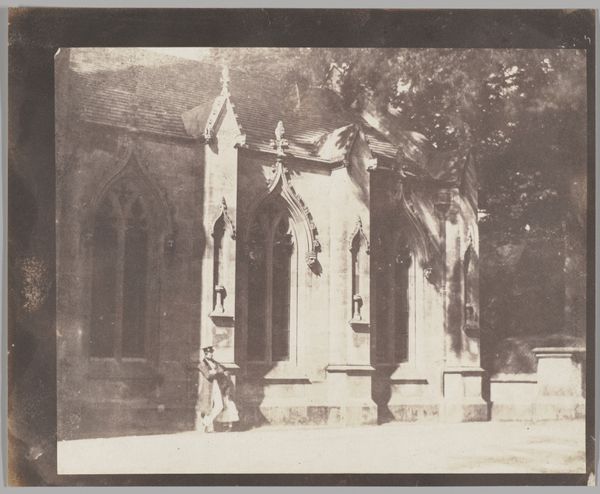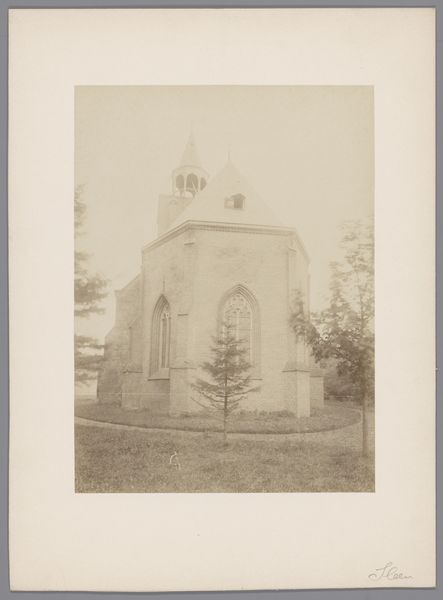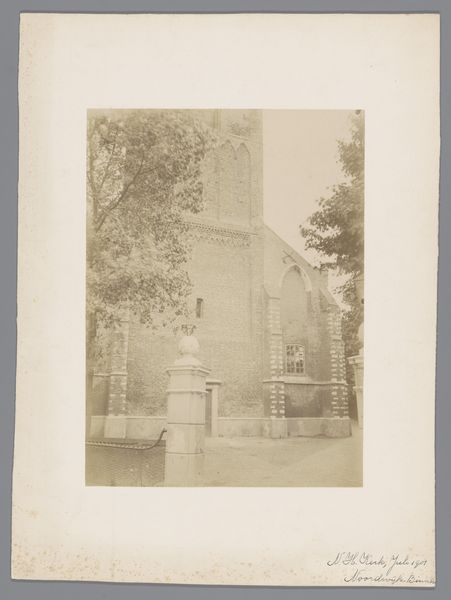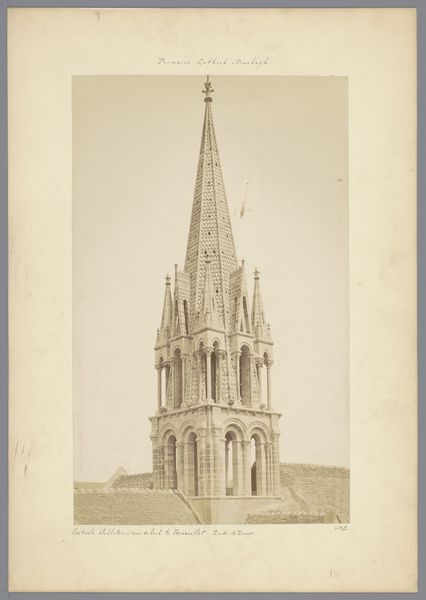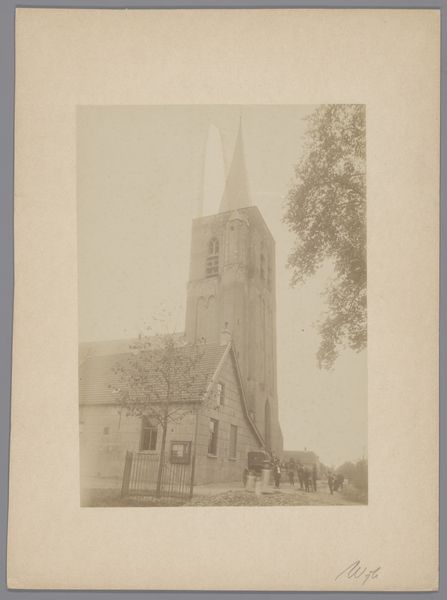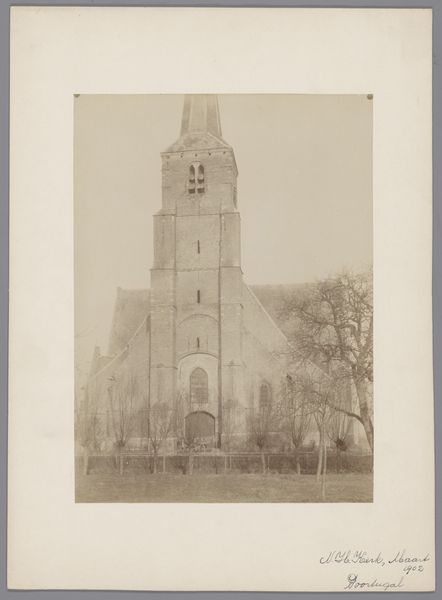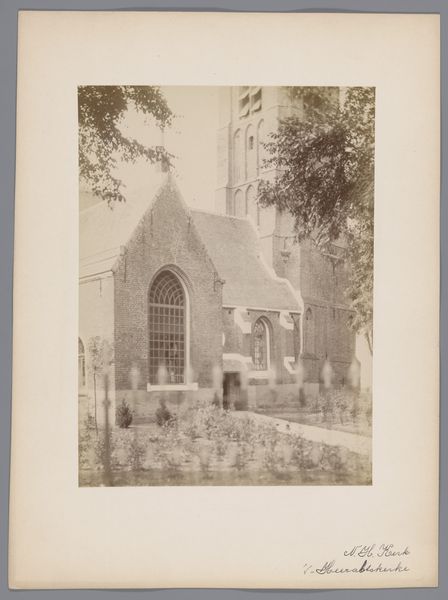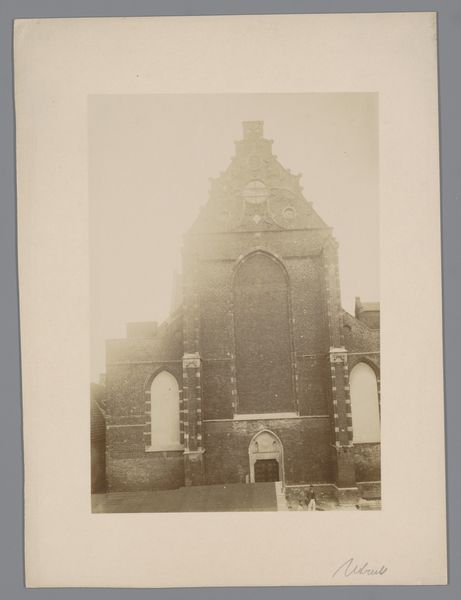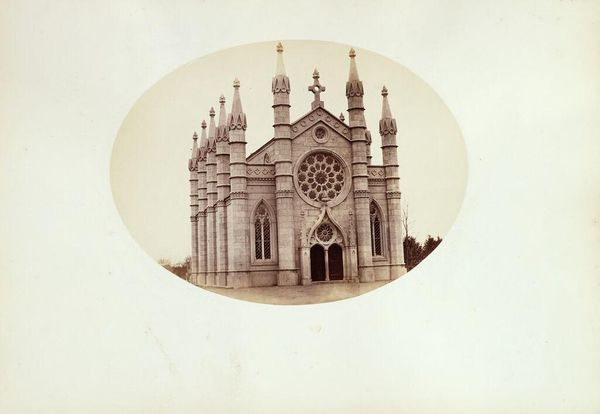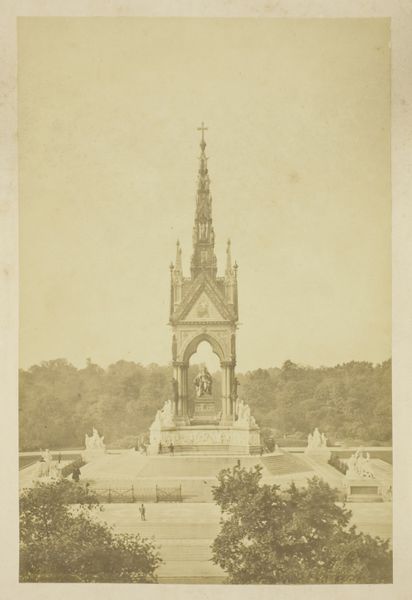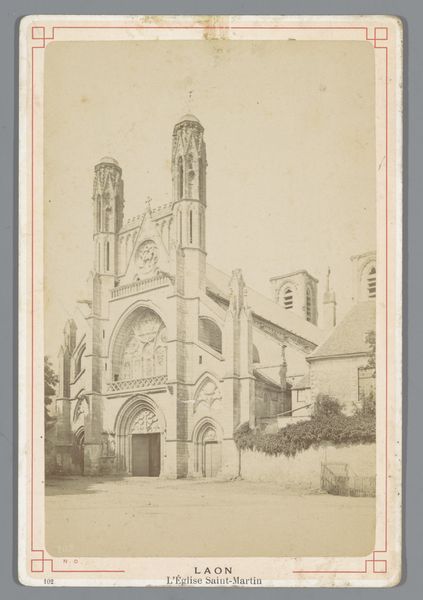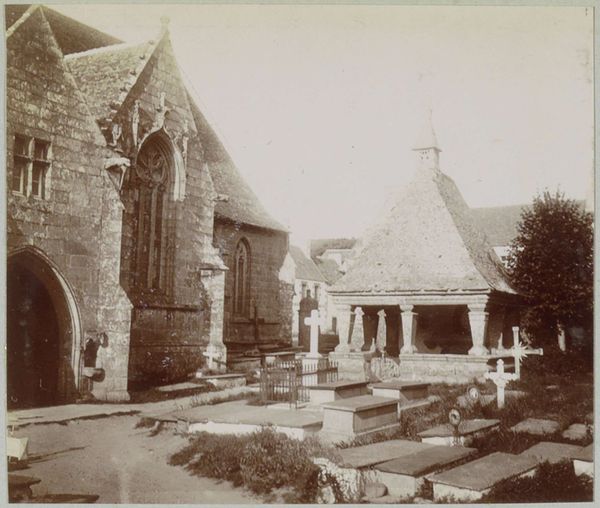
bronze, photography, sculpture
#
statue
#
landscape
#
bronze
#
photography
#
sculpture
#
realism
#
statue
Dimensions: height 260 mm, width 212 mm
Copyright: Rijks Museum: Open Domain
Curator: What a remarkably composed photograph, steeped in the visual language of 19th-century Romanticism! This image, "Tombe in de tuin van Villa Pallavicini in Pegli," captured between 1870 and 1890, presents a study in the symbolic weight of monuments within landscape. What is your initial reaction to this? Editor: Somber elegance. The muted tones emphasize the stillness and contemplative mood. It reminds me of those elaborate Victorian cemetery designs, celebrating the lives of those gone. What can you tell me about its origins? Curator: Certainly. The photographer, Celestino Degoix, has framed the architecture beautifully. You see how the tomb, likely a family mausoleum, functions as a kind of secular temple? Note the bronze sculpture, a lion atop its roof -- a classical guardian. Degoix uses realism in order to show a constructed setting imbued with emotional intensity. The statue almost looks like an attempt to make real an ancient legend. Editor: Yes, the lion evokes that sense of timeless power and vigilance. It speaks to how elites have always utilized architecture to establish enduring legacies. Were photographs of similar sites and monuments popular at this time? Curator: Precisely! This photograph feeds into the late 19th-century culture of memorialization that flourished across Europe. But more than that, I see layers of appropriation here; Italian Renaissance forms blending with those of antiquity. A sculpture within a building is contained inside a photograph; each media containing the last like nesting dolls. The meaning accumulates. Editor: It makes me think about the cultural politics embedded within this practice. Commissioning artists like Degoix to depict elite spaces allowed families like the Pallavicini to actively shape their public image and perpetuate social hierarchies. Curator: I concur! It becomes less a personal expression of grief and more a performative act intended to solidify one's social standing and to declare that this family, this monument, will live on. The very act of photographing it gives it another life. Editor: In a way, this image serves as a document, capturing not just the physicality of the tomb, but also the social ambitions and the ideological currents of its time. I do love that these kind of images show our obsession with self and permanence hasn't shifted much through the centuries. Curator: Exactly. I appreciate how revisiting images such as these compels us to reflect not only on individual artistic achievement, but on the socio-cultural values perpetuated through its visual symbolism and legacy. Editor: A truly fascinating blend of history, personal expression, and power, all captured in a single photographic frame.
Comments
No comments
Be the first to comment and join the conversation on the ultimate creative platform.

